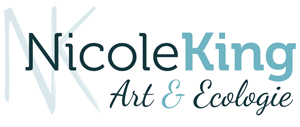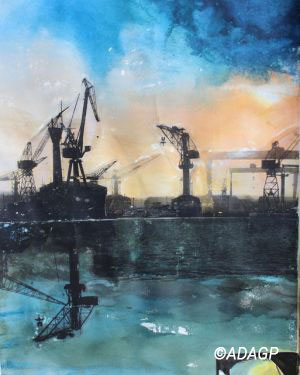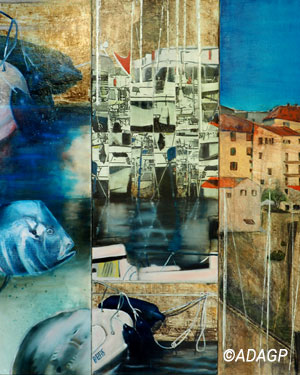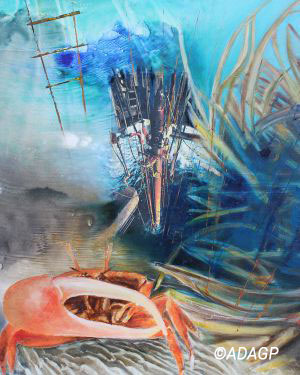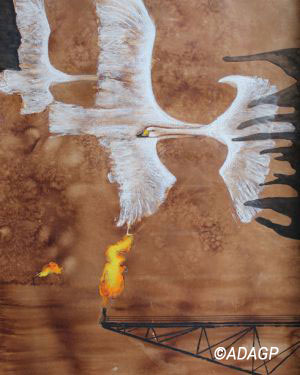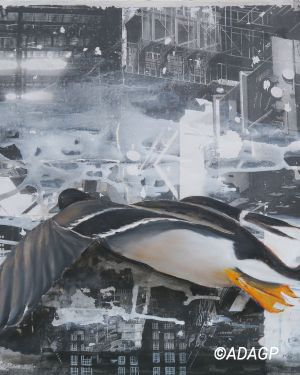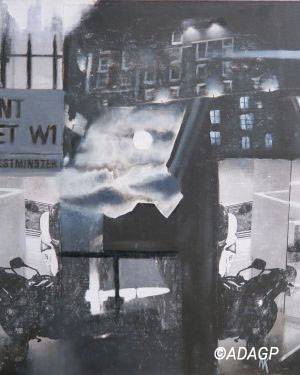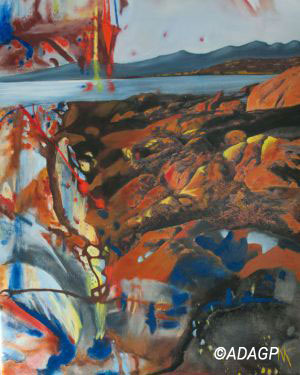Pollution and environmental disasters
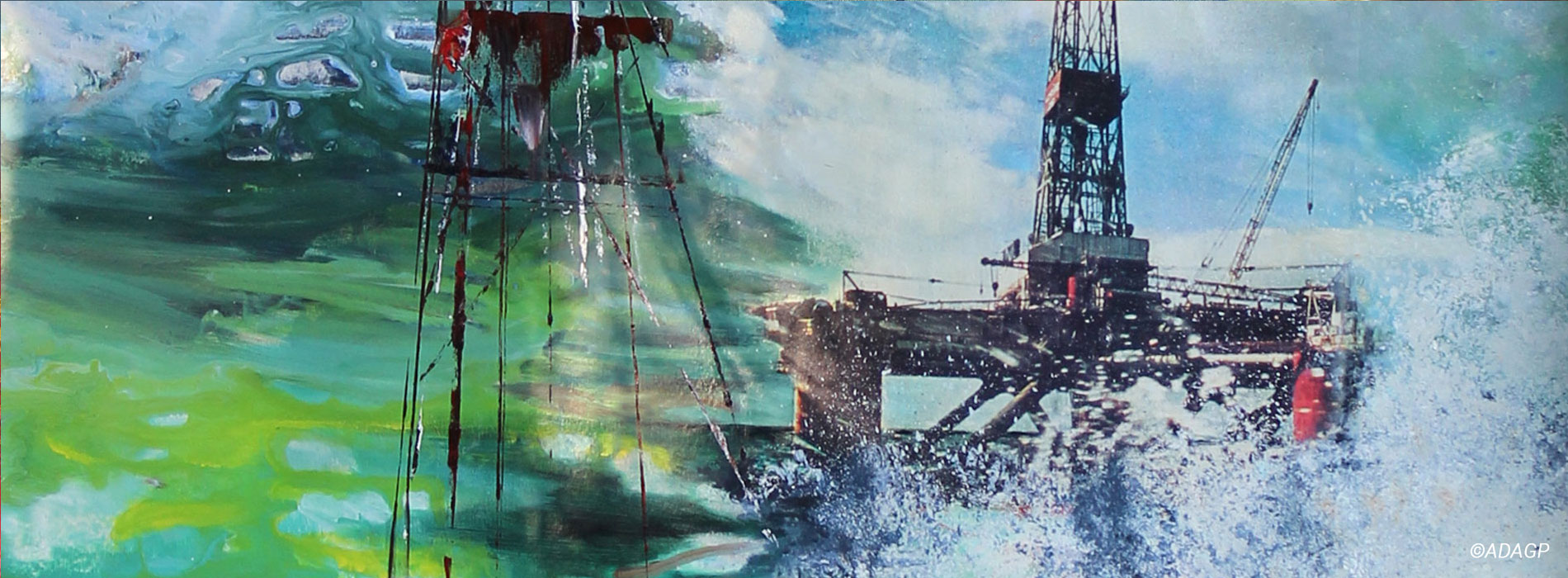
The ecological context
My experience as an environmental engineer on off-shore oil fields allows me to ask through my paintings the key questions revealed by recent ecological disasters:
April 2010, Gulf of Mexico: explosion of the BP Deepwater Horizon (DWH) oil platform on the Macondo well. The largest offshore oil spill of all time: 60,000 barrels/day released during 3 months (Ref. Biblio. Nicole King’s Coal 2010 Project.)
March 2, 2011, Fukushima, Japan: loss of control of the nuclear reactors at the Fukushima power plant. since June 2011: 16 trillion becquerels washed up at sea, more than 180,000 people permanently displaced (Ref. biblio. Libération of March 19, 2013 p. 19 “Fukushima, irradiation in a continuous stream”).
March 25, 2012, North Sea: explosion of the Elgin gas platform with discharges of 200,000 m3 of gas/day for 3 months then partial clogging until the discharges stopped in October 2012. (Ref. biblio. Le Monde of March 8, 2013, P.13 “Total can resume gas extraction on Elgin”).
As a spokesperson for WWF International during the Gulf War (1990-1992), Nicole King reminded the media community that the 300 uncontrollable oil well explosions and resulting air pollution could have been avoided if B.O.P. (Blow out preventer) valves had been installed, as required by international safety rules when drilling wells. The Elgin and DWH accidents were also caused by the failure of the safety valves.
Artistic approach
Nicole King paints with honesty what she sees and what she knows: the softness and the hardness of the world crystallized around the element-life, sometimes decor, sometimes actor, in mixed compositions combining photographic realism and pictorial inventiveness. The result shows how a good canvas is worth more than a long speech.
Thibaud Josset, Art critic ( Univers des Arts)

